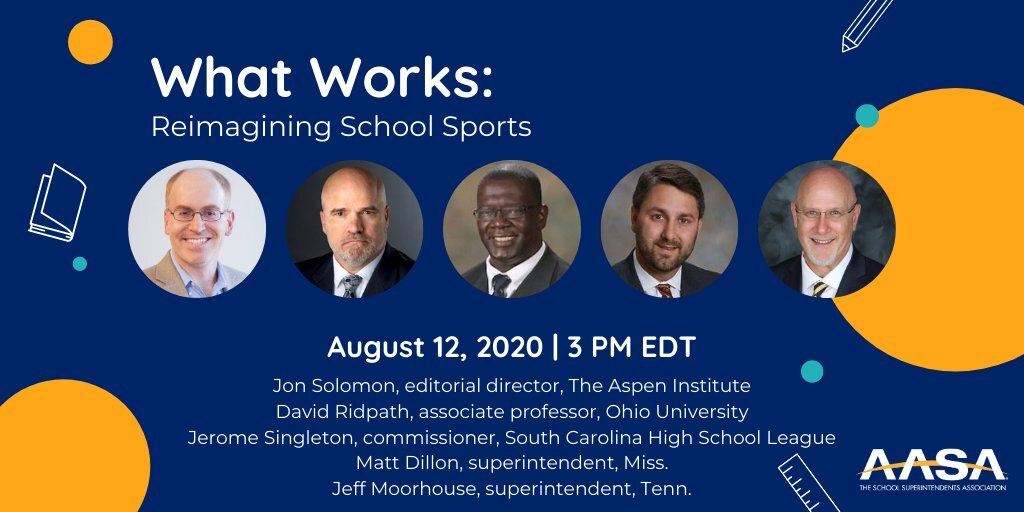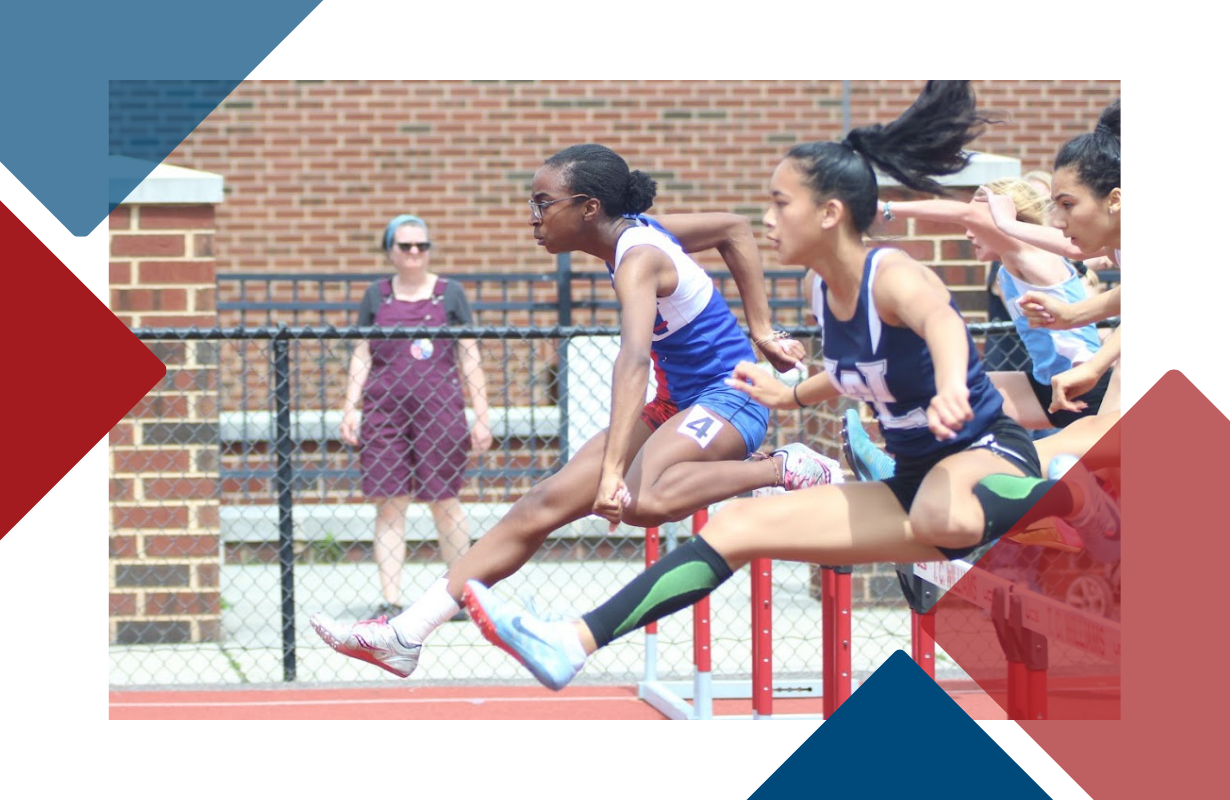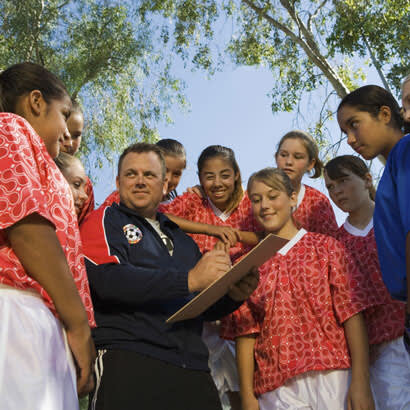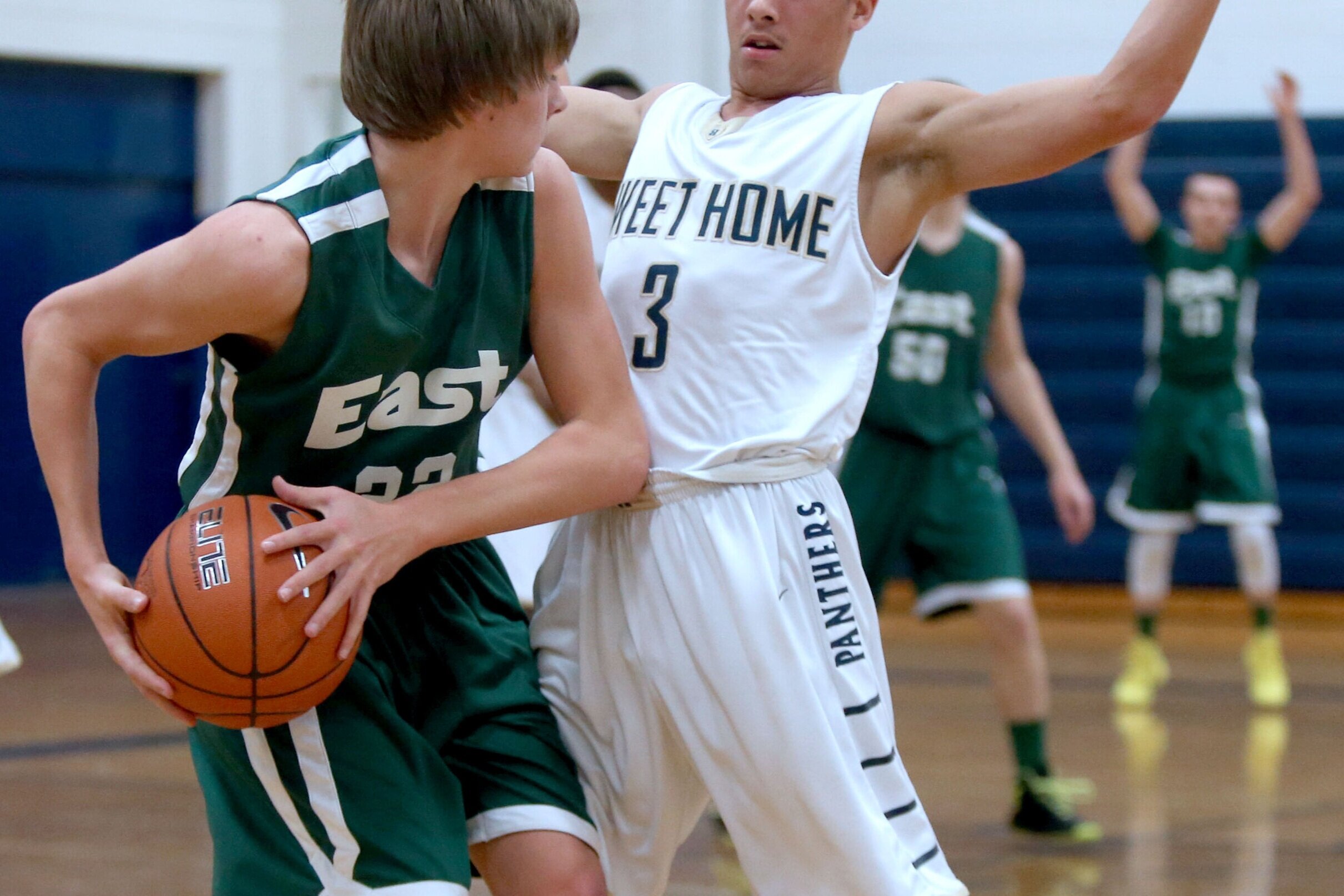Schools in Camden, New Jersey will begin the academic year with all-remote learning – a decision driven by families and staff indicating they were not comfortable with in-person school. The city of Camden (population 74,000) has the most COVID-19 cases in Camden County, with 2,548 cases and 71 deaths as of Wednesday.
Now, the school district will have to figure out whether to play sports this fall while remote. And that’s worrying Camden High School Athletic Director Mark Phillips, who believes high schools across the country are headed for a “slippery slope” by allowing all-remote schools to participate in sports practices and games.
“What we’ve seen recently is sports have taken a priority over a lot of things in the country, which I think is a very dangerous statement for education,” Phillips said. “If you’re remote only and playing sports, kids are able to see that schools are run by athletics. I think we’re making dangerous decisions by talking about sports and not talking about school. It’s a terrible message to say, ‘No, don’t come to school, but yes come play sports.’”
Across the country, some decisions to play sports while remote are being made as a way to provide students with positive activities for physical and social development. And some decisions also appear to be driven by a desire to salvage the football season, which is embedded culturally in some communities and generates significant revenue.
The National Federation of State High School Associations (NFHSS) is tracking the developments. In most cases, the NFHS says, if states have not returned to in-person learning and are continuing in a virtual format, sports and other activities are not permitted.
“It appears that some states may be reconsidering that stance; however, and given the right circumstances, this could open up activities for more students,” NFHSS Executive Director Karissa Niehoff wrote in a recent column. “While some schools may be forced to start classes virtually, lower-risk sports such as golf, tennis and cross country (with modifications), which are conducted outdoors and have built-in physical distancing by the nature of the sport, may be acceptable.”
Football is the elephant in the room. It’s the sport that health experts say carries the most risk this fall given the close contact of players and large roster sizes. But in many school districts, it also pays the bills for other sports.
“When that cash cow doesn’t get a chance to eat, it makes it tough for meals for the calves,” South Carolina High School League Commissioner Jerome Singleton said in a recent webinar hosted by AASA, The School Superintendents Association. “If there’s an opportunity that football couldn’t occur, (schools) will have to look at their budgets and make some tough decisions. You’ve got to have some courageous conversations – hopefully before they explore doing away with other sports. Maybe we don’t play as many contests on the road. Maybe we limit how far we travel. Maybe we can’t offer (sports) at all levels at this time.”
High school sports without actually being in high school “feels weird, let’s just admit it,” said Emory University epidemiologist Zachary Binney. “Nobody can feel good about this. The best argument I think you can make is students spending hours together in a small classroom indoors is dangerous, but shouldn’t we give kids as normal a life as possible and couldn’t some sports be lower risk than spending all day inside in classrooms? If the cross country team can still run safely, why not go running?”
Binney’s counterargument: “It’s not zero risk. It feels like something we shouldn’t be prioritizing. Why are we doing anything that could possibly lead to community spread and we can’t even open schools?”
School districts apply different approaches
In Pennsylvania, the debate about all-remote schools playing sports recently reached the governor’s office. Gov. Tom Wolf recommended that schools choosing online-only should not play sports in the fall, causing significant backlash within the state.
“I’m not sure we’ve figured out exactly how we can do this, but what happens in schools should be consistent with what happens on the playing fields,” Wolf said at a recent press conference. “In other words, if the school is going completely virtual, it seems hard to justify having in-person contact sports being played in the fall. If the school is going to be open and feels it’s safe – if teachers, administrators, parents feel it’s safe to reopen – that’s a different proposition for contact sports.” (The governor’s office clarified he was referring to all sports, not just contact.)
The Pennsylvania Interscholastic Athletic Association (PIAA) and some state legislators believe organized fall sports should be played either way during the pandemic. “Come fall, if schools are unable to engage in sports, and absent another mandatory shutdown, families and students will not stop playing,” PIAA Executive Director Robert Lombardi wrote in a letter to Wolf. “They will simply find other outlets. Halting interscholastic athletics will not eliminate the risk, it will simply shift it to other venues that lack sufficient oversight.”
Responded Wolf: “I’m sorry, that’s my recommendation. You do what you want, and school districts are going to do what they want.”
At Kingsport City Schools in Tennessee, the school district started remote-only learning this week. Sports are continuing because health and safety must factor in social and emotional components for students, Superintendent Jeff Moorhouse said.
“When you make a decision for a school system (for in-person learning), you’re making a decision for everyone to have to come in,” Moorhouse said. “But when you’re participating in extracurriculars, that’s a voluntary activity so you’re not demanding that everybody has to do that. If a family has a health condition, most of those families aren’t participating.”
Moorhouse expects challenges to continue for football to be played this fall. Two schools in his region lost their opening game because opponents are under quarantine. How many games Kingsport City Schools could play and how much the stadium capacity would have to be reduced are unanswered questions.
“We’re already planning on restrictions across the board so we can weather whatever financial (challenges) come out of our football season,” Moorhouse said.
Mississippi school districts are “all over the board” on whether to allow remote-learning schools to play sports, said Matt Dillon, superintendent of the Petal School District. The state’s high school sports governing body and education department have allowed extensive latitude to local control, “so a lot of pressure has been put on superintendents and boards of education to make the decision,” said Dillon, whose district opens with in-person learning next week.
Mississippi reports the highest average positivity test rate (22%), which is the percentage of positive tests among total tests conducted in a given population over the past seven days. Other states that are very high include Florida (18%), Texas (16%), Nevada (16%), Alabama (14%) and South Carolina (14%), according to Johns Hopkins University of Medicine. All of those states still plan to play high school football this fall, even though the World Health Organization advises that acceptable positivity rates for communities should be 5% or lower for 14 days.
At Petal High School in Mississippi, football sells about 2,000 season tickets each year, not including general admission. The first two games have already been canceled and the state has limited sporting event attendance to 25% capacity, so Dillon expects many financial challenges.
“These football gates cover a lot of supplies for other sports, so ultimately it will have an impact on the bottom dollar at the district level,” Dillon said. “We’ve got to be frugal and make good decisions and do the best we can.”
In South Carolina, Singleton is preaching safety as commissioner of the state high school league. The state is allowing football games to start Sept. 25. Back in March, Singleton tested positive for COVID-19 and was on oxygen to help his breathing. Since then, his sister and elderly aunt died from the virus and a nephew tested positive.
If a school is remote only, before deciding whether or not to play sports, Singleton said it’s important to understand why the school is remote. Is it because the students aren’t safe, or is it because the physical plan can’t accommodate the students based on the required restrictions?
“If (it’s due to the physical plan), then can you safely offer the sport and address those concerns health-wise through athletics?” Singleton said. “If you have the ability to do that, I think you ought to consider still allowing them to play.”
Do high schools need a financial model less reliant on football?
To date, 13 states (California, Colorado, Delaware, Hawaii, Illinois, New Mexico, North Carolina, Maryland, Minnesota, Oregon, Vermont, Virginia and Washington) plus Washington D.C. have canceled football this fall, according to MaxPreps. Elsewhere, some teams are playing traffic cops with practices and games flipping on and off depending on positive tests by students and staff.
One of Indiana’s annual marquee games was canceled due to the amount of varsity, junior varsity and freshmen players on one team who are quarantined. In Utah, the state’s first game of the season was canceled two days before kickoff after three players on one team tested positive. Several teams in Alabama suspended practices due to positive tests, including three-time state champion UMS-Wright in Mobile (where 35% seating capacity will be allowed) and powerhouse Vestavia Hills High School, whose legendary coach confirmed he has COVID-19.
What’s believed to be the nation’s first high school football game this season was played Thursday night in Utah. Fans wore masks and players drank from their own water bottles, according to the Salt Lake Tribune. The stands were sold out at 25% capacity.
While fans wore masks the majority of the game, the Tribune reported that the majority of them were in close proximity to each other. Fans were instructed to leave as soon as the game ended. Both teams were allowed to dress only 50 players each and metal chairs were set up to keep bench players socially distant on the sideline. However, the Tribune reported that reserve players stood close to one another and teammates swarmed each other after touchdowns.
“Tackle football is, unfortunately, one of the higher-risk sports you can try to bring back,” said Binney, the epidemiologist. “I’d be a lot more willing to buy the argument of kids playing something safer like tennis, cross country, golf or baseball. But football starts to feel like that’s making a contribution to the community that we can’t afford now.”
Ohio University sports business professor David Ridpath said he worries that high schools are rushing into decisions about playing football due to money – similar to what happens in college football.
“The financial model of football being so critical in both high school and college sports needs to change,” Ridpath said. “Easier said than done, but it needs to be part of the reimagining so that if football is not played for any reason – including CTE issues (brain injuries that can occur from playing the sport) – that there is still adequate funding for other sports.”
College football decisions could impact what high schools do. The Big Ten and Pac-12 conferences, who have far more resources than high schools, canceled their fall seasons due to safety concerns. If the SEC and/or ACC cancel the fall season, Singleton said that South Carolina high schools would need to first understand why the conferences are not playing.
“We may end up exactly where (the college programs) are,” Singleton said in an interview with myhorrynews.com. “All we’re saying is let’s wait and see what happens. We don’t have TV contracts in place. They have a lot of different things on their plate that don’t exist in ours. We have things on our plate that aren’t on their plate. Case in point: We’re not able to test. … Realistically, that becomes a major challenge for our schools. We can’t just (test) football (players). It would have to be every sport that we offer.”
Phillips, the athletic director at Camden High School, has allowed students this summer to practice football, cheerleading and band in groups of 10 outside. No spectators are allowed at the practices. Temperature checks occur at the gate. No coach or athlete has shown symptoms, so none have been tested for COVID-19, which people can have asymptomatically.
If there is a football season, Phillips said he can’t imagine fans in the stands, resulting in lost revenue. Phillips said Camden students would stream the game on Facebook Live and add commentary as a graded school project. The school might charge $5 or $6 per person to watch.
“Parents will want to see their kids play and that will be a major issue if we’re unable to do that,” he said. “That’s something that parents will transfer their kids over.”
With no in-person learning for the fall, Phillips is torn about whether sports should even be played. He had already decided that his kids will not attend school even before the Camden school district made the decision for him.
“It’s difficult to tell another parent what they should be doing when I know I’ll keep my children home until I see improvement,” Phillips said. “That’s the dangerous message we’re trying to navigate right now.”
Do you have a topic that you would like Project Play to explore in future COVID-19 youth sports coverage? Email Jon Solomon at jon.solomon@aspeninstitute.org.





















